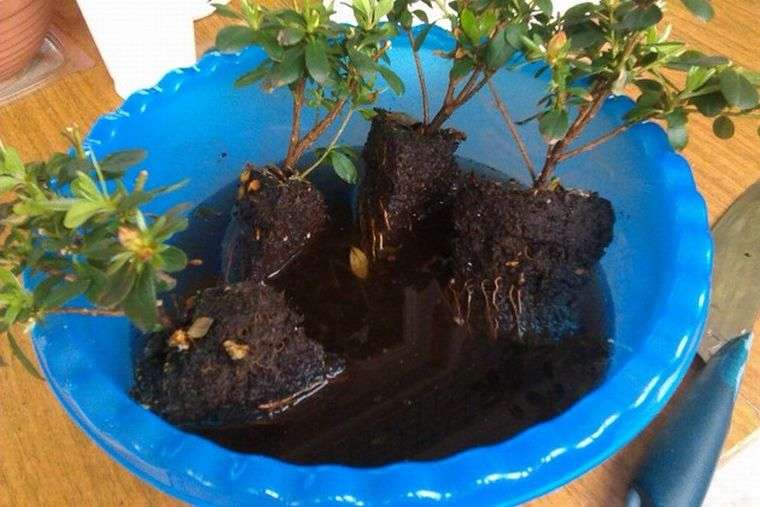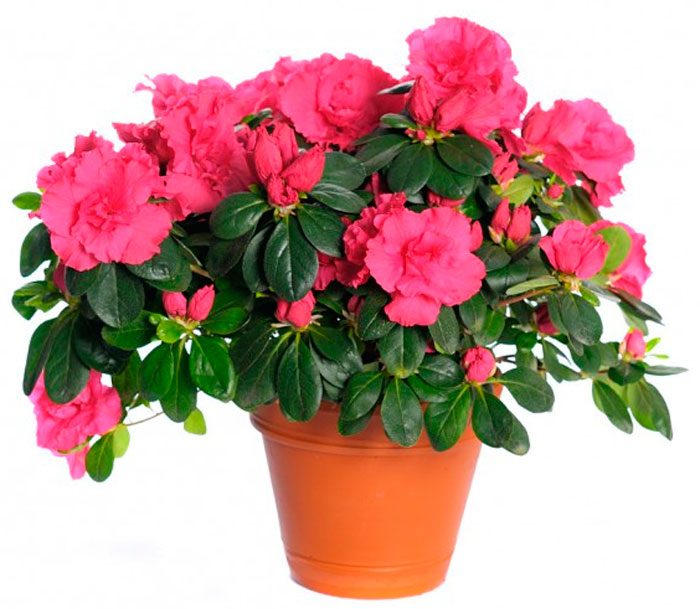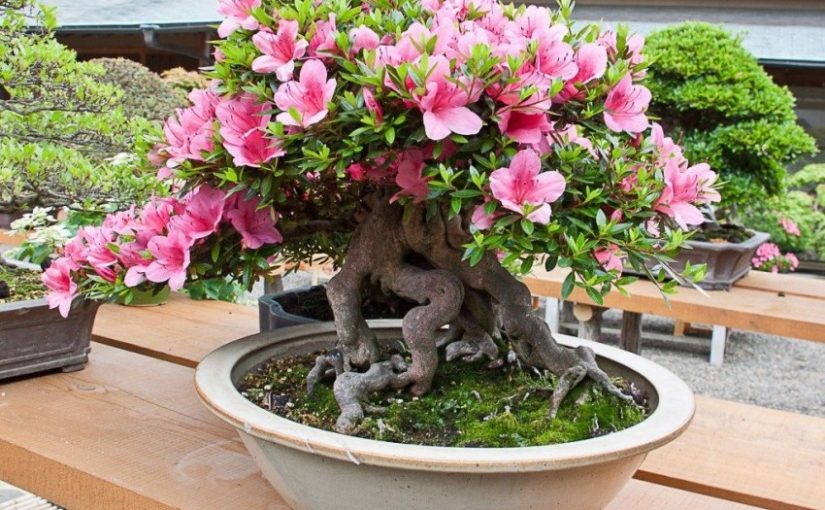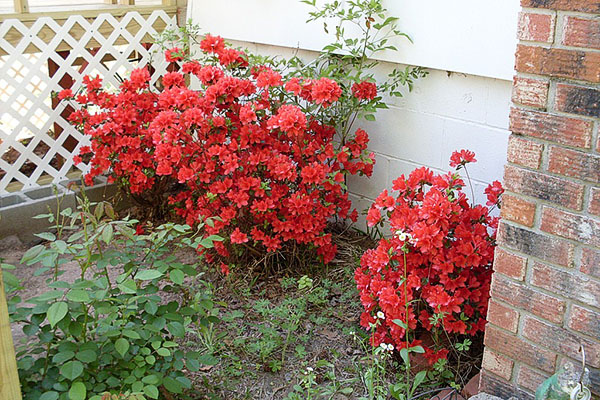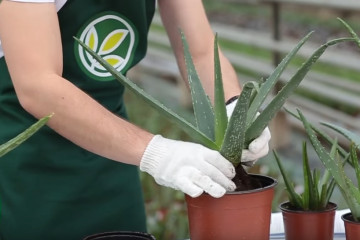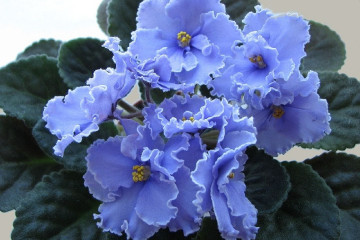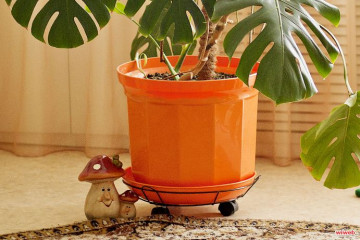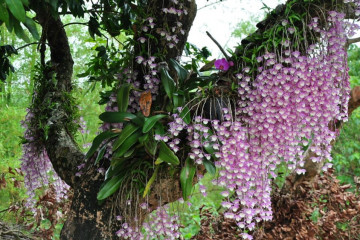How to transplant azalea - options at home
Content:
Azalea belongs to the Heather family, is a prominent representative of the genus Rhododendrons. The indoor representative is endowed with a huge number of bright inflorescences. The species is undemanding to the conditions of maintenance and care. Their obvious non-observance can lead not only to the fall of foliage and inflorescences, but also to the death of the plant.
When to transplant azalea at home
Azalea transplant at a young age is carried out once a year. Any deviation from this norm can lead to stress and illness. The best period when you can transplant an azalea without harm to the flower is spring. In this case, a bush is formed.
Experienced florists recommend combining these two procedures. More frequent transplants are carried out only as a last resort:
- when the root system has outgrown the size of the pot;
- when the process of decay of the substrate or roots began.
After the purchase
After purchasing a plant, they ask themselves: how to plant an azalea at home? Transplanting after purchase is a mandatory procedure. For transportation and sale, suppliers place plants in a special substrate in which the plant is uncomfortable to grow for a long time.
Florists are advised to purchase ready-made soil designed specifically for azaleas. The flower is extremely picky about the composition of the soil and the slightest disturbance in the proportions can lead at least to the development of diseases. It is difficult to prepare the right substrate at home.
The transplant is carried out by the transshipment method. Azalea is thoroughly cleaned of soil mixture and planted in a well-drained container. Watering after transplanting is carried out directly under the root.
After flowering
Transplanting an azalea after flowering includes the following activities:
- First, the buds are cut.
- A special preparation is added to the purchased soil that protects the plant from fungal spores - trichodermin.
- The azalea pot is covered by 1/3 of any drainage material to avoid rotting of the root system.
- To increase the acidity of the soil, a layer of pine bark is laid out on the drainage.
How to transplant azalea at home so as not to damage the root system? The procedure is performed as carefully as possible:
- The plant is removed from the pot. It is important not to damage the roots at this stage.
- The flower, together with a dense earthen lump, is soaked in any stimulating solution for 30-40 minutes.
- At this stage, the root processes are carefully examined. If there are diseases or injuries, they are cut off with a sharp knife.
- After processing, they are transferred to a new pot and covered with soil for azaleas.
- The place for the flower should be as illuminated as possible and be away from heating appliances. The adaptation time directly depends on the variety and the primary state of the bush.
Reasons for transplant
There are several reasons why this procedure is carried out:
- If there are visible signs of a disease on the ground - mold, fungus.
- When part of the root or the entire root system is damaged.
- For a young bush - annually. For an adult - no more than once every 2-3 years.
- With a strong growth of the root system.
How to properly transplant azalea indoors
Before planting the azalea, preparatory work is carried out. For this you will need:
- Sharp knife or secateurs.
- Alcohol for tool processing.
- Purchased or self-prepared soil.
- Planting capacity.
Selection and preparation of soil
If for some reason it is not possible to purchase a special substrate for azaleas, prepare it yourself. To do this, mix:
- finely chopped pine bark;
- pre-well dried sphagnum;
- perlite or vermiculite;
- sifted river sand;
- coal;
- nutritious soil.
All components are thoroughly mixed. Before planting, the resulting substrate is treated with a disinfectant.
Pot selection
A wide container is suitable for planting. The size of the new pot is adjusted according to the size of the root system. A planter is ideal for azaleas.
Renewal root pruning
Sanitary root pruning has a beneficial effect on the plant. The flower, together with an earthen lump, is taken out of the pot. Initially, external damage is inspected and dead parts are removed. It is not recommended to separate the dense earthen lump with your hands, this can lead to damage to the weak roots. Before pruning, soak it in a mixture of warm water and Zircon. After this, they begin to update pruning. The roots are cut on each side by 1-1.5 cm.
Splitting an azalea
The division of the bush is carried out not only for reproduction of the species you like, but also due to the large size of the plant. To do this, carefully remove the flower from the pot, examine the root system and, as necessary, cut off diseased or dried parts. The earthen ball is cut into several pieces with a knife.
Planting in another pot
The landing procedure consists of a number of step-by-step activities:
- The bottom of the container is covered with drainage by 3 cm.
- The next layer is chips or crushed moss.
- To prevent decay, sprinkle with any antifungal agent.
- The soil composition is covered with very little, only to carefully distribute the root system over the planting container.
- The roots of the pre-soaked azalea are lightly squeezed out.
- The flower is placed exactly in the center of the pot and carefully covered with soil.
- It is not recommended to deepen the root collar of the plant, this can damage it and will not allow it to develop normally.
- The substrate is lightly tamped.
- Watering after planting is carried out with the same composition in which the soaking was carried out.
Features of transplanting azaleas in the garden
The transplant or planting of a street representative in the garden is carried out in early spring, before the moment of active sap flow. In extreme cases, the transplant of the species can be postponed to the beginning of autumn. Azalea street has a superficial arrangement of roots, which is why it does not require a deep hole for planting. Depth - no more than 50 cm, width - 70-80 cm. The bottom of the seat is covered with a thick layer of broken brick or gravel.
The soil should consist of nutrient soil, peat, humus and river sand. The landing of a street representative is no different from a room one. The root collar of the transplanted plant should be above ground level. After planting, the soil is tamped and moistened.
Typical transplant errors
Failure to follow the transplanting rules can lead to infection of the plant with a fungus or the invasion of harmful insects. If you over-water your azalea, there is a risk of developing rust or root rot. In the fight against the disease, any fungicide or solution of copper sulfate is excellent.
When pests appear on the plant: aphids, spider mites or whiteflies, timely treatment with an insecticidal agent will help. If, after transplanting an azalea, home care does not allow you to get buds, then the reason is:
- unsuitable soil for growing;
- illiterate watering and spraying regime;
- dry air;
- non-compliance with the norms of feeding.
Further care of the flower
During the period of active growth, the plant is watered in a timely manner and abundantly. Moistening is carried out as the top layer of the earth dries up. Warm, settled water is suitable for irrigation.
In dry times, the bush requires spraying, which is carried out in the early morning or after sunset. By the end of the season, watering is reduced by at least half. Due to a lack of moisture, the azalea stops growing and can survive the winter time without problems. Flower feeding is carried out three times a year:
- Nitrogen fertilizers are applied immediately after the "awakening" of the flower - in early spring.
- At the time of budding, potassium and phosphorus are added to the soil.
- After the buds have faded, the soil is fertilized with a mixture of phosphorus and potassium. The proportion of the composition is 1: 2.
Indoor and outdoor azaleas are a responsive culture. Compliance with the rules and regulations of agricultural technology will invariably lead to abundant flowering. The view can easily become a decoration not only for any home, but also for a personal plot.


